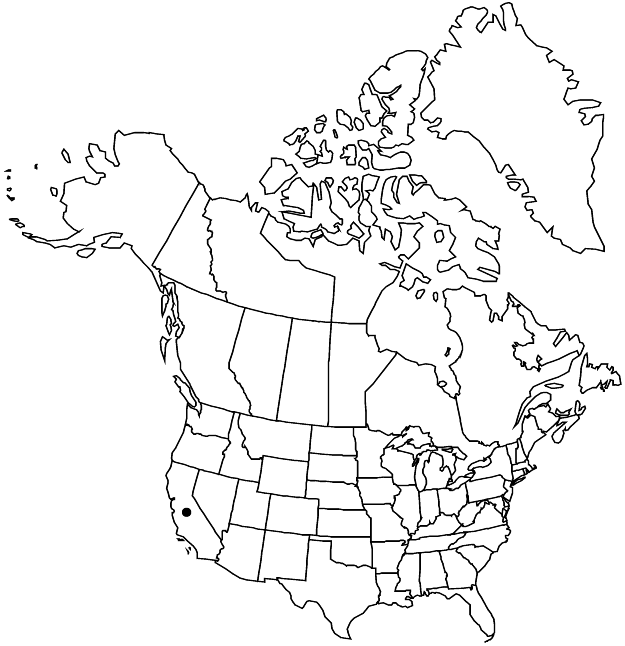Difference between revisions of "Eriogonum umbellatum var. bahiiforme"
Fl. Calif. 1: 425. 1914.
FNA>Volume Importer |
FNA>Volume Importer |
||
| Line 11: | Line 11: | ||
|name=Eriogonum polyanthum var. bahiiforme | |name=Eriogonum polyanthum var. bahiiforme | ||
|authority=Torrey & A. Gray | |authority=Torrey & A. Gray | ||
| + | |rank=variety | ||
|publication_title=Proc. Amer. Acad. Arts | |publication_title=Proc. Amer. Acad. Arts | ||
|publication_place=8: 159. 1870 (as bahiaeforme) | |publication_place=8: 159. 1870 (as bahiaeforme) | ||
| Line 29: | Line 30: | ||
|elevation=700-2000 m | |elevation=700-2000 m | ||
|distribution=Calif. | |distribution=Calif. | ||
| − | |discussion=<p>Variety bahiiforme occurs in widely scattered locations in the Central Coast Ranges (Colusa, Contra Costa, Monterey, Napa, San Benito, Santa Clara, and Sonoma counties) with a disjunct population in the San Gabriel Mountains of Los Angeles County. The more depauperate relative, < | + | |discussion=<p>Variety bahiiforme occurs in widely scattered locations in the Central Coast Ranges (Colusa, Contra Costa, Monterey, Napa, San Benito, Santa Clara, and Sonoma counties) with a disjunct population in the San Gabriel Mountains of Los Angeles County. The more depauperate relative, <i></i>var.<i> minus</i>, occurs in the mountains to the east.</p> |
|tables= | |tables= | ||
|references= | |references= | ||
| Line 38: | Line 39: | ||
-->{{#Taxon: | -->{{#Taxon: | ||
name=Eriogonum umbellatum var. bahiiforme | name=Eriogonum umbellatum var. bahiiforme | ||
| − | |||
|authority=(Torrey & A. Gray) Jepson | |authority=(Torrey & A. Gray) Jepson | ||
|rank=variety | |rank=variety | ||
| Line 53: | Line 53: | ||
|publication year=1914 | |publication year=1914 | ||
|special status= | |special status= | ||
| − | |source xml=https://jpend@bitbucket.org/aafc-mbb/fna-data-curation.git/src/ | + | |source xml=https://jpend@bitbucket.org/aafc-mbb/fna-data-curation.git/src/f50eec43f223ca0e34566be0b046453a0960e173/coarse_grained_fna_xml/V5/V5_701.xml |
|subfamily=Polygonaceae subfam. Eriogonoideae | |subfamily=Polygonaceae subfam. Eriogonoideae | ||
|genus=Eriogonum | |genus=Eriogonum | ||
Revision as of 21:56, 16 December 2019
Herbs, spreading mats, 0.8–2(–2.5) × 3–6 dm. Aerial flowering stems erect, usually 0.5–1.5 dm, tomentose, without one or more leaflike bracts ca. midlength. Leaves in rather compact rosettes; blade elliptic to oval, 0.5–1.5(–1.7) × 0.3–0.7 cm, densely white- to gray-lanate on both surfaces, margins plane. Inflorescences compound-umbellate, branched 2–5 times; branches tomentose, without a whorl of bracts ca. midlength; involucral tubes 2–3 mm, lobes 2–3.5(–4) mm. Flowers 5–8 mm; perianth bright yellow.
Phenology: Flowering Jul–Sep.
Habitat: Sandy to gravelly, mostly serpentine flats and slopes, oak and montane conifer woodlands
Elevation: 700-2000 m
Discussion
Variety bahiiforme occurs in widely scattered locations in the Central Coast Ranges (Colusa, Contra Costa, Monterey, Napa, San Benito, Santa Clara, and Sonoma counties) with a disjunct population in the San Gabriel Mountains of Los Angeles County. The more depauperate relative, var. minus, occurs in the mountains to the east.
Selected References
None.
